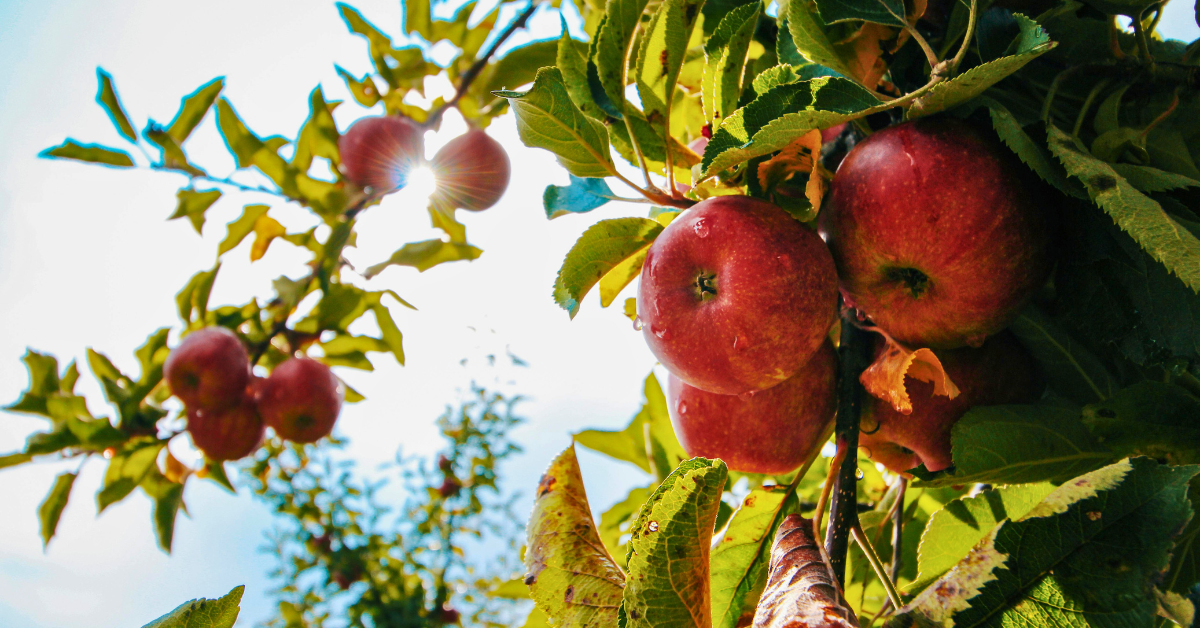Most fruit trees are domesticated, which means they have been bred to grow more vigorously and bear larger fruit than their wild cousins. This means it’s important to prune them regularly for optimal health and productivity.
The main goals of pruning fruit trees are to:
- Open up the canopy to allow airflow between branches for pollination and disease reduction
- Redirect energy towards branches that are going in an ideal direction (not too low or high, not curving or crossing other limbs)
- Manage the shape and size of a tree, especially as it relates to the surrounding context (fences, sidewalks, buildings, other trees)
- Shape the tree to be stout and strong to resist snow, fruit, and wind loads
- Remove dead or diseased tissue
- Increase fruit production by increasing the amount of surface area of the tree that is exposed to light (a more open canopy will produce blossoms throughout the tree instead of just around the outside edges)
The best time for yearly pruning is in the late winter or early spring when the trees are dormant (usually before the end of March is best). You can also prune after the trees have gone fully dormant in the fall, but it usually takes until later in November for trees to fully lose their leaves, and it tends to be less comfortable to prune from a weather perspective during December than late February or March.
General Guidelines
Pruning is an art and a science, and takes several seasons to develop comfort and confidence. Here are some general tips to guide you as you practice:
- Begin by removing all dead or diseased wood. If you are not sure if a branch is dead, bend it back and forth a bit to see if it snaps. If you are still unsure, scrape a bit of the bark off with a blade or a fingernail–green cambium means it is still alive.
- There are two types of cuts: heading and thinning. A heading cut removes part of a branch, and a thinning cut removes an entire branch. Every heading cut makes the tree stouter, stockier, and bushier, while every thinning cut makes the tree longer and more open. Your task is to balance the two types of cuts.
- Remove branches that are parallel or crossing, or seem like they will conflict or rub against each other (remember that branches sag with the weight of fruit!)
- Don’t take more than ¼ to ⅓ of the aboveground biomass of a tree in any one season. You can always take more next year! At the same time, don’t be timid or afraid to make big cuts. Fruit trees will respond well to heavy pruning, and the biggest mistake new pruners make is not pruning enough.
- Make your heading cuts at a roughly 45-degree angle, and make your thinning cuts in a way that doesn’t leave a stubby branch protruding a few inches.
What To Do With Clippings
Depending on the size and number of your trees, there may be a significant pile of pruned branches to deal with. Some ideas are: spend time cutting them into small chunks and incorporate them as mulch under the tree; bundle them with twine and make borders or fences; give them to animals like goats to eat; use them for art projects like basketry or dye-ing. Clippings can also be composted in city composting bins. Never leave any diseased wood on site, as it will spread infection to other vulnerable trees.
Tool Hygiene and Maintenance
Pruning is like surgery, and it’s best to do it in the same conditions: with sharp, sterile tools while the patient is asleep. You should work to sharpen your pruning shears each season, and while pruning use some rubbing alcohol to sanitize your tools in between each tree. This is especially important when moving between two trees of the same species (i.e. peach to peach) because they will carry communicable diseases.
Pruning for Fireblight or Disease Removal
One notable exception to the dormant pruning rule is to remove disease, especially fireblight. Apples, pears, and some plums are susceptible to fireblight, a bacterial infection that can be fatal to young trees. Some varieties are resistant to the disease, but no trees are fully immune.
If you notice fireblight on your trees in June or July, the best practice is to use sanitized tools to trim out the affected tissue about 12 inches below the lowest outward sign of infection. That is not always possible given the branching structure, but avoid cutting right at the infection point. If there are multiple infection sites on a tree, sanitize between every cut!

